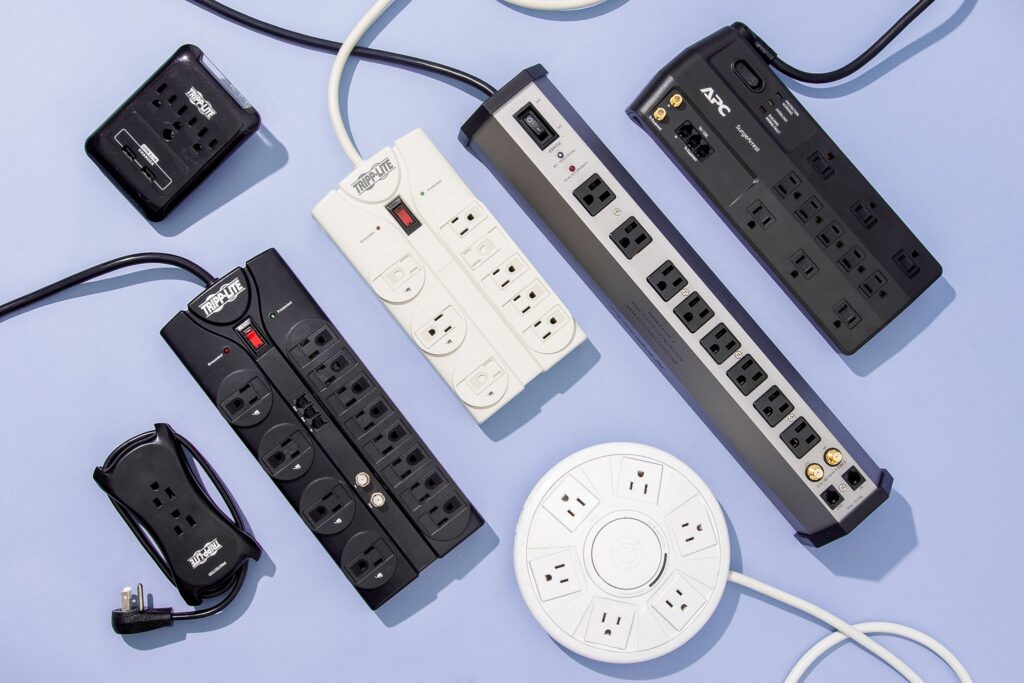In today’s digitally-driven world, our reliance on electronic devices has never been higher. From smart phones to laptops, televisions to kitchen appliances, we surround ourselves with gadgets that make our lives easier and more connected. However, with this dependency comes the risk of damage caused by power surges. Enter surge protectors – unsung heroes of modern technology. In this comprehensive guide, we’ll delve into the world of surge protectors, exploring their importance, how they work, types available, and tips for choosing the right one for your needs.
Understanding Power Surges
Before delving into surge protectors, it’s crucial to understand what power surges are and how they occur. A power surge is a sudden and temporary increase in voltage that can damage electronic devices connected to an electrical system. Surges can be caused by various factors, including lightning strikes, power grid switching, and electrical faults within the home. While some surges are dramatic and immediately noticeable, others can be subtle, gradually wearing down electronic components over time.
The Role of Surge Protectors
Surge protectors serve as a barrier between your valuable electronic devices and potentially harmful power surges. These devices are designed to detect excess voltage and divert it away from connected equipment, thus shielding them from damage. Without surge protectors, your electronics are vulnerable to the whims of fluctuating electrical currents, leaving them susceptible to premature failure or complete destruction.
How Surge Protectors Work
At the heart of every surge protector is a component known as a Metal Oxide Varistor (MOV). When voltage spikes occur, the MOV absorbs the excess energy, diverting it away from connected devices. This process is akin to a pressure relief valve, ensuring that only safe levels of electricity reach your electronics. Additionally, surge protectors may incorporate other features such as thermal fuses and gas discharge tubes to further enhance their protective capabilities.
ALSO READ: GEÖE: HARNESSING GIS AND ADVANCED ENGINEERING FOR SUSTAINABLE SOLUTIONS
Types of Surge Protectors
Surge protectors come in various shapes, sizes, and configurations to suit different needs and preferences. Some common types include:
Basic Power Strips with Surge Protection: These are the most basic form of surge protectors, combining multiple outlets with surge protection capabilities. They are affordable and easy to use, making them suitable for everyday household use.
Wall-Mounted Surge Protectors: Ideal for spaces where floor or desk space is limited, wall-mounted surge protectors provide surge protection while keeping outlets easily accessible.
Heavy-Duty Surge Protectors: Designed for high-power electronics such as home theater systems and gaming consoles, heavy-duty surge protectors offer greater surge suppression capabilities and often feature additional outlets and safety features.
Whole-House Surge Protectors: Installed at the main electrical panel, whole-house surge protector’s safeguard an entire home’s electrical system from external power surges. They provide a comprehensive defense against lightning strikes and other large-scale surges.
Travel Surge Protectors: Compact and portable, travel surge protector’s are designed for use on the go, providing surge protection for devices while traveling or working in different locations.
Choosing the Right Surge Protector
Selecting the appropriate surge protector for your needs requires careful consideration of several factors:
Joule Rating: The joule rating indicates how much energy the surge protector can absorb before it fails. Higher joule ratings offer greater protection against larger surges.
Clamping Voltage: Also known as the let-through voltage, this value represents the maximum voltage that will pass through to connected devices during a surge. Lower clamping voltages provide better protection.
Number of Outlets: Ensure the surge protector has enough outlets to accommodate all your devices. Consider future needs as well, as it’s better to have spare outlets than to run out of space.
Response Time: A surge protector’s response time determines how quickly it can react to a surge. Look for models with faster response times for optimal protection.
Warranty and Equipment Protection Policy: Check the warranty offered by the surge protector manufacturer, as well as any equipment protection policies that may cover connected devices in the event of a surge-related failure.
Installation and Maintenance
Proper installation and maintenance are essential for maximizing the effectiveness of surge protectors:
Placement: Place surge protector’s in easily accessible locations and avoid covering them with furniture or other objects that could obstruct airflow and ventilation.
Testing: Periodically test surge protector’s using a surge test button, if available, to ensure they are still functioning correctly.
Replacement: Surge protector’s have a limited lifespan and may degrade over time, especially after absorbing multiple surges. Replace surge protector’s every few years or after significant surge events.
Conclusion
Surge protector’s play a vital role in safeguarding our electronic devices from the unpredictable nature of power surges. By understanding their importance, how they work, and the different types available, you can make informed decisions to protect your valuable electronics effectively. Whether you’re outfitting your home office, entertainment center, or entire house, investing in quality surge protection is a small price to pay for the peace of mind knowing that your devices are safe from harm.







